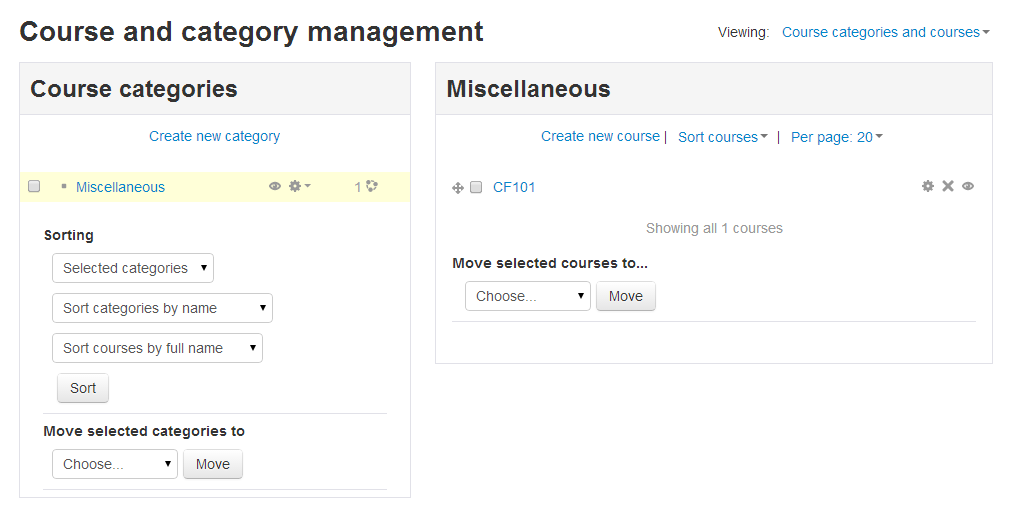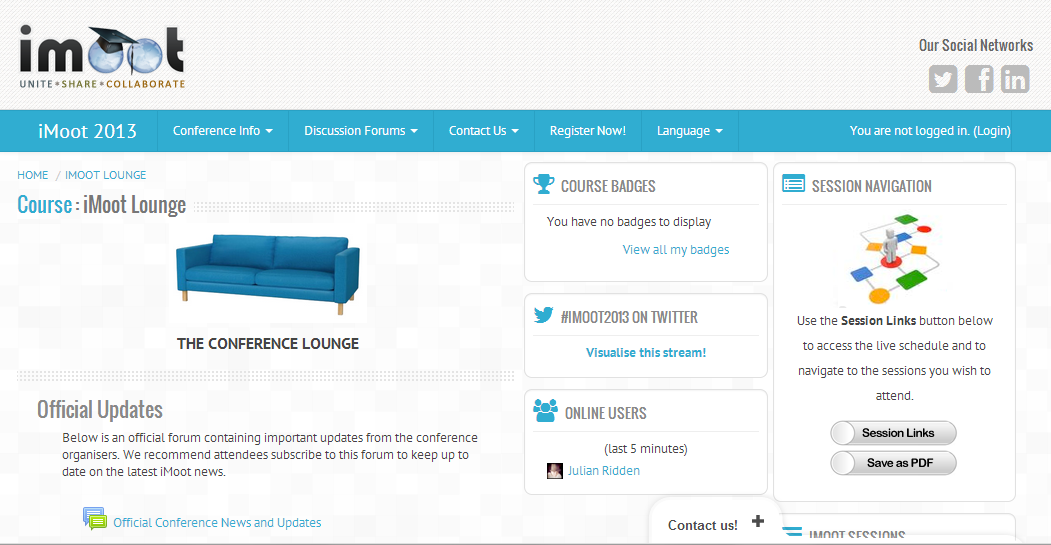Reading Time: 4 minutes
After a lapse of several months we finally had a MoodleBrighton meetup last week. It was good to see everyone again and to catch up on what’s been going on, and we had a couple of new faces too. It was a good session, loosely based around an exploration of Moodle 2.6 with attendees coming from Sussex Uni, Brighton Uni, Moodlerooms and Epic.
Using the Moodle 2.6 release notes as a guide, we picked out the most interesting looking items and headed over to the Moodle Demo site to check them out. So, what did we learn?
The category and course management interface has been reworked. It looks much tidier now and the rework makes it significantly quicker to perform common tasks.

Image: Category and course management
There is a bulk course creation tool now too. We get asked about this from time to time at Epic so it’s a useful new feature, especially when migrating to a new Moodle site if you are unable to automated the migration of courses into the new system.
Standardised plugin installation and management was a hot topic. There is a lot of interest in this feature, drawing the inevitable WordPress comparisons and discussions around just how wise it is to allow site admins to automatically install and update plugins that could be of dubious quality, directly into a live site. This feature has been around a few versions now and continues to improve though in M2.6 with multiple improvements and fixes.
The ability to backup and restore very large courses of over 4GB caused a bit of a stir from the Brighton University attendee where they struggle to perform this task using Blackboard. The cause of this is a PHP limitation which is apparently being fixed in PHP5.6, but in the meantime Moodle 2.6 includes a workaround for the issue.
There are apparently improved course resource and activity edit icons which improve usability on all screens. I say apparently because they actually look pretty poor (see below) in that icons are various different sizes, are not in vertical alignment with each other and move to all sorts of bizarre positions when you resize your browser. It’s so bad, I raised a bug. A work in progress this one, for sure.

Image: Above showing viewport width of 1030px – icons of all sizes and alignments

Image: Above showing viewport width of 820px – weird wrapping behaviour
There are BIG improvements to Tiny MCE, or the HTML Editor, as most of us know it. It looks miles better now, see below. But it still needs a lot of work on mobile devices, especially the file picker, which I am sure a developer would tell me is not part of Tiny MCE. However to an end user it is an integral part of the content editing experience and it remains difficult to use on a mobile. But the editor itself looks a treat now, a huge improvement.

Image: TinyMCE toolbar improvements
Email notification for new users added manually is very useful for us at Epic, as this is a common requirement in workplace learning Moodles. When a user is created manually, the user can now be sent a welcome email with their login information. Simple, and very useful.
There is a minor improvement to the Open Badges implementation with badges now being awarded more quickly. This is a very minor fix in this release but it prompted quite a long discussion among the group about Open Badges in general, their impact on gamifying courses and how the Open Badges implementation in Moodle is a bit all over the place, with settings and display pages here there and everywhere. Well, at least four different places that we could see. A really popular feature this one though, and I’m sure Moodle’s Open Badges implementation will only get better with time.
The next feature we stumbled across caused a bit of a storm: “PDF submissions can now be directly annotated by teachers“. The Sussex Uni attendee commented that document uploads tend to be in Word format rather than PDF at their institution, but hey, this one still rocks! A great new feature.
So that’s pretty much the stuff we looked at over about 90 minutes. It was really the tip of the iceberg to be honest, as this release is absolutely jam packed full of new features. There were lots of things that we didn’t get round to having a proper look at including:
- Simplified forgotten username and password reset process
- New Single Activity Course Format
- Grade-based conditional availability now updated immediately after grading
- Ability to change forum digest settings on a per-forum basis
- Lots of SCORM player and SCORM report improvements
- Support for Microsoft Skydrive repository
There are also bags of improvements for developers including LOADS of performance improvements and API/Web Service improvements.
One thing that was very apparent is that a lot of effort is being put into improving usability which was warmly received by all attendees, with a recognition that it’s very much a journey that Moodle is starting out on and with lots still to do. It’s all heading in the right direction and that can only be a good thing.
To finish up we took a look at the Essential theme that has been the talk of the town in recent months. It looks pretty cool too. All that, plus the usual quantities of salacious Moodle gossip and a few pints of beer afterwards, all made for a cracking xmas MoodleBrighton!
See you there in 2014. Updates at MoodleBrighton on Google+

Essential theme demo site at http://2013.imoot.org/